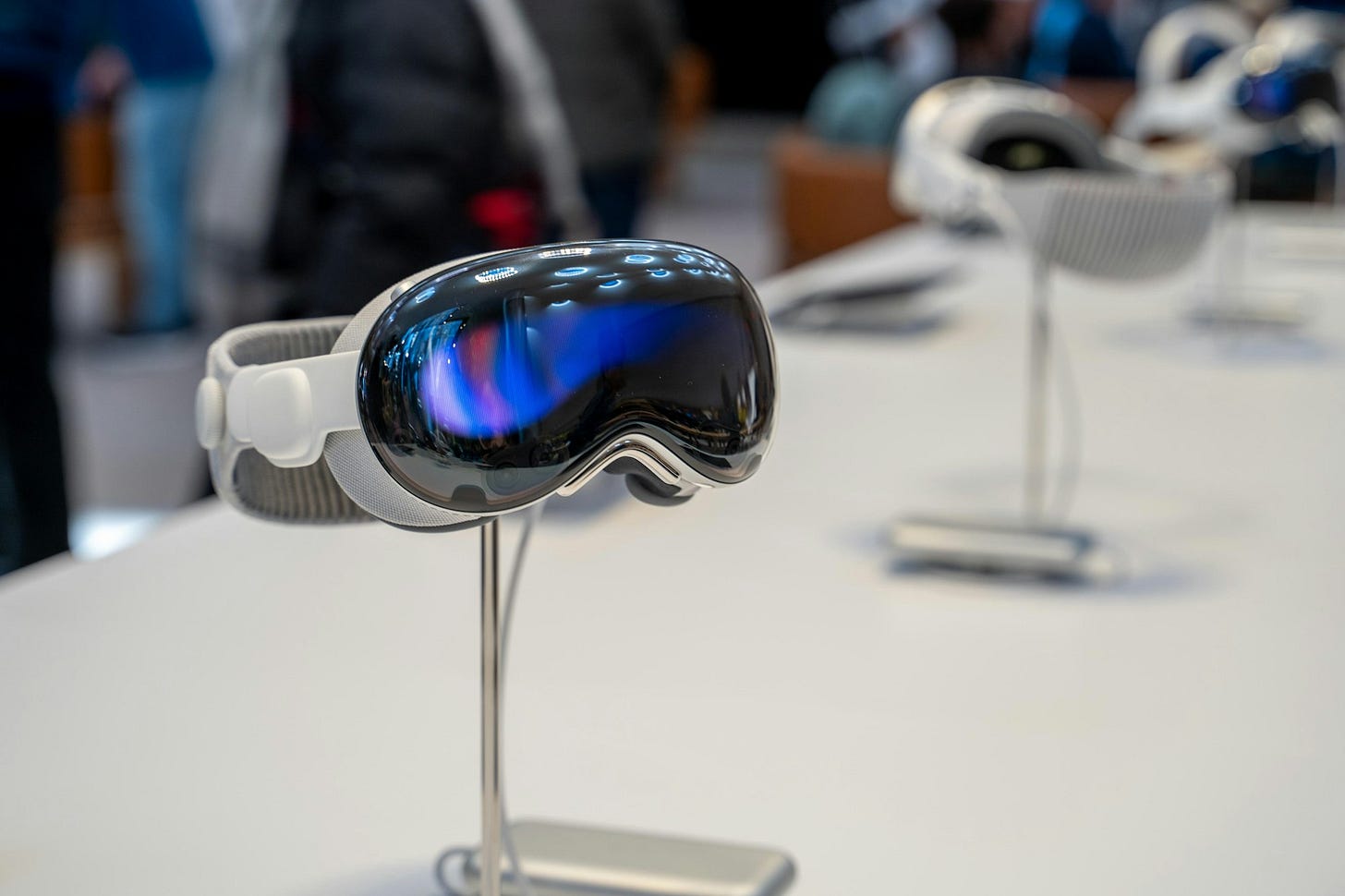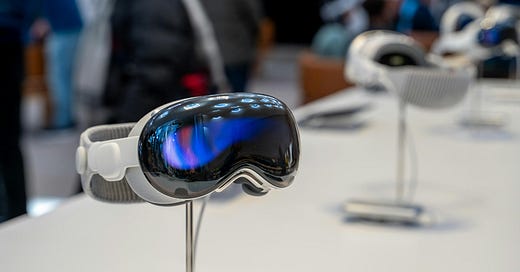My Vision for Apple's Vision

As someone who loves playing with all of the latest gadgets and gizmos, particularly from Apple, the launch of the Vision Pro has left me and my fellow non-Americans headset-less, wandering through the world tapping our fingers together at imaginary floating windows.
To stave away the waves of depression-inspiring FOMO, my only alternative was to read and watch and listen to everything I could get my hands on in order to develop a sort of proxy opinion for the Vision Pro’s potential, as well as its potential impact on the world. (And yes, before you ask, I did consider driving across the border to buy one, like I did with the original HomePod, but Apple has region-locked the headset to only work with the US App Store and the US iTunes Store, so my library of apps, movies, TV shows, and music would be completely useless.)
I won't bury the lede, I think the Apple Vision Pro is the dawn of a new age of computing, and we could potentially look back at this moment in the same way we do the launch of the iPod, the iPhone, the iPad, or the Apple Watch. There are a startling number of similarities, even though this might be Apple’s most ambitious product launch since the first Mac in 1984. Let me explain.
Apple excels at entering existing categories, upending them with refined user experiences, elegant design, and novel user interaction models. Apple is never first to enter a new market. They famously let other companies test the waters, make a bunch of mistakes, and then burst in like the Kool-Aid Man with a polished, complete thought.
The iPod, the iPhone, the iPad, the Apple Watch. Each and every one of these have become massive category-leading products that generate tens of billions of dollars each year.
That being said, it’s important to remember that Apple is not afraid to ship major new products with massive compromises at high prices to a relatively small number of buyers.
It’s time for a bit of a history lesson. On January 9, 2007, Steve Jobs stood on stage at Macworld and announced the first iPhone. It had an all-new way of interacting with your phone, called a capacitive touchscreen, that used the electrical heat from your finger to navigate the user interface.
The iPhone famously lacked a stylus, a popular accessory included with most smartphones shipping at the time that had a resistive touchscreen, or a screen that responded to pressure. It also lacked a keyboard, one of the flagship elements of the most popular phones at the time, namely from Blackberry.
The first iPhone was made almost entirely from metal and glass, while a majority of the competition was shipping plastic rectangles with removable batteries. It was far more expensive than the competition, coming in at $500 on top of the monthly subsidy included in your monthly phone plan. At the time, competitor’s devices would top out at $199 or even $0 with a plan.
Here’s Steve Ballmer, the CEO of Microsoft at the time, commenting on Apple’s new entrant into the smartphone market, noting that Apple is about to be selling the most expensive phone ever, despite not even having a physical keyboard:
Here’s Mark Zuckerberg reviewing the Apple Vision Pro, commenting on Apple’s new entrant into the headset market, noting that Apple’s headset is 7x more expensive despite not having controllers:
I’ll present both of these without comment, make your own judgements!
In my humble opinion, the true key to Apple’s success has been an almost pathological pursuit of perfection through continuous iteration, improvement, and innovation.
As I’ve already mentioned, Apple’s first iPhone shockingly shipped without a stylus and a keyboard, but it also lacked genuinely useful things like the ability to Cut, Copy, and Paste. It couldn’t shoot video. You couldn't change the wallpaper. It didn’t have a GPS and couldn’t be used for turn-by-turn navigation. If you got it wet, your best hope was a bowl of rice and a lot of praying. It didn’t even have an App Store.
Can anyone imagine their iPhone not having any of those things today?
When Apple unveiled the iPad, reviews claimed it was too heavy to be used comfortably for long periods of time, there were very few apps optimized for the form factor, and the software felt incomplete. Sound familiar?
When the Apple Watch was launched, reviews noted that the battery life was insufficient, the interface was confusing, and it was notably more expensive than it’s competitors in the market. Sound familiar?
A lot of reviewers have pointed out some of the key shortcomings with Apple Vision Pro, as they rightly should.
Nilay Patel from The Verge notes that “two people in Vision Pro headsets sitting in the same room can’t see the same things floating in space at the same time.”
Mark Gurman from Bloomberg points out that watching a movie in a pitch black room throws off the device’s room/hand tracking and causes error messages to show up.
Joanna Stern from the Wall Street Journal warns us that your digital Persona, Apple’s brand of digital avatar, “will haunt your dreams.”
It can be easy to write off these and a lot of other criticisms as deal-breakers. And maybe for this first version, they are! Apple’s iPhone business only went supersonic after the launch of the iPhone 6 and 6 Plus gave people bigger screens and elevated Apple’s bottom line to an eye-watering extent.
In 2015, Apple allegedly sold “only” 15M Apple Watches - in 2021, that number is estimated to have exceeded 100M. The first version of the Apple Watch was a deeply flawed product, with slow apps, weird ideas about heartbeats, and a finicky notification system. In a hilarious turn of fate, The Verge’s Nilay Patel gave the first generation of the Apple Watch a 7/10 in 2015, and in 2024 he gave Apple Vision Pro an identical score of 7/10. I got the World of No Sevens idea from him!
In no way am I attempting to persuade you, my dear reader, that it is inevitable that Apple Vision Pro becomes a massive success and we’re all doomed to a future dominated by giant face computers. I’m not even trying to tell you that you should buy one! I haven’t used one yet, and even with all of my enthusiasm, I know it’s probably best to hold off until the next few iterations start to alleviate some of today’s major concerns.
However, they say those who do not understand history are doomed to repeat it, and I think a lot of people will be surprised when Apple Vision Pro, and spatial computing as a category, looks a lot different 10 years from now.
10/10 - I can’t review a device I haven’t tried, but the folks who put countless hours into their reviews are amazing. All of them are incredible in their own way, but if I had to pick three of them for you to watch:
Sign up for No Sevens
Life's too short for "good enough." The Good, the Bad, the Future.
No spam. Unsubscribe anytime.



